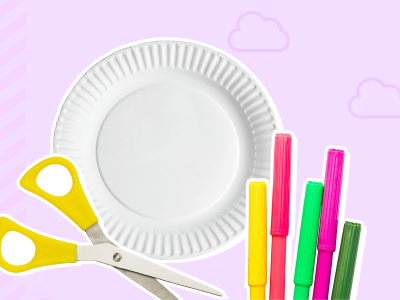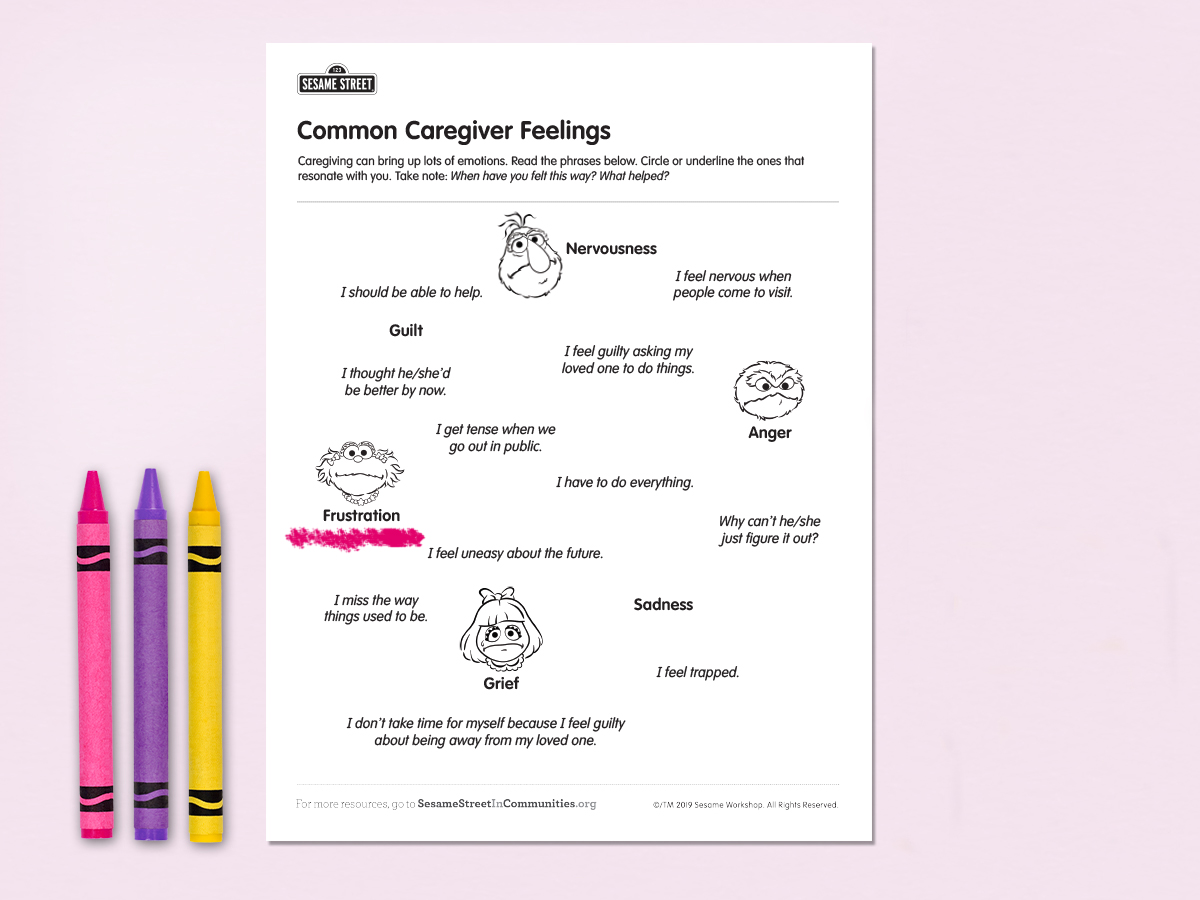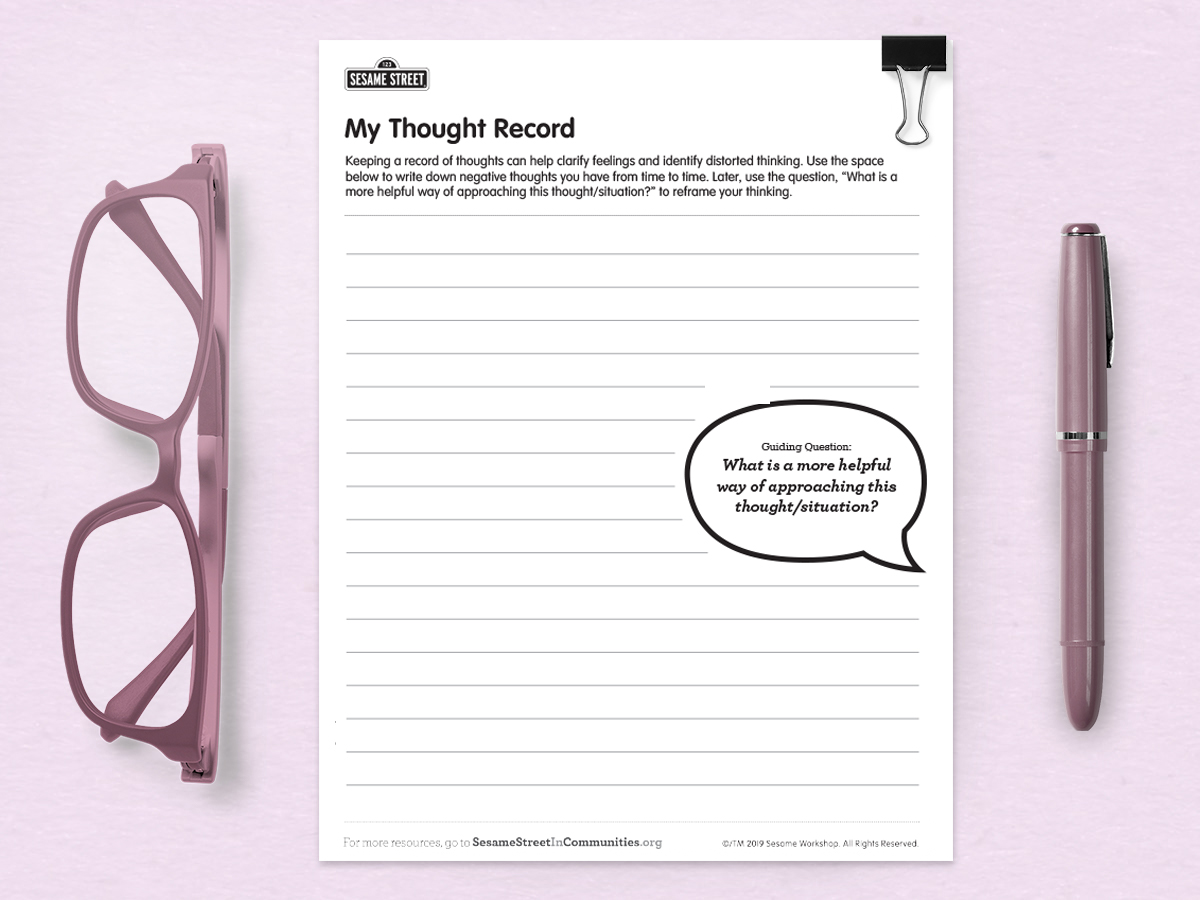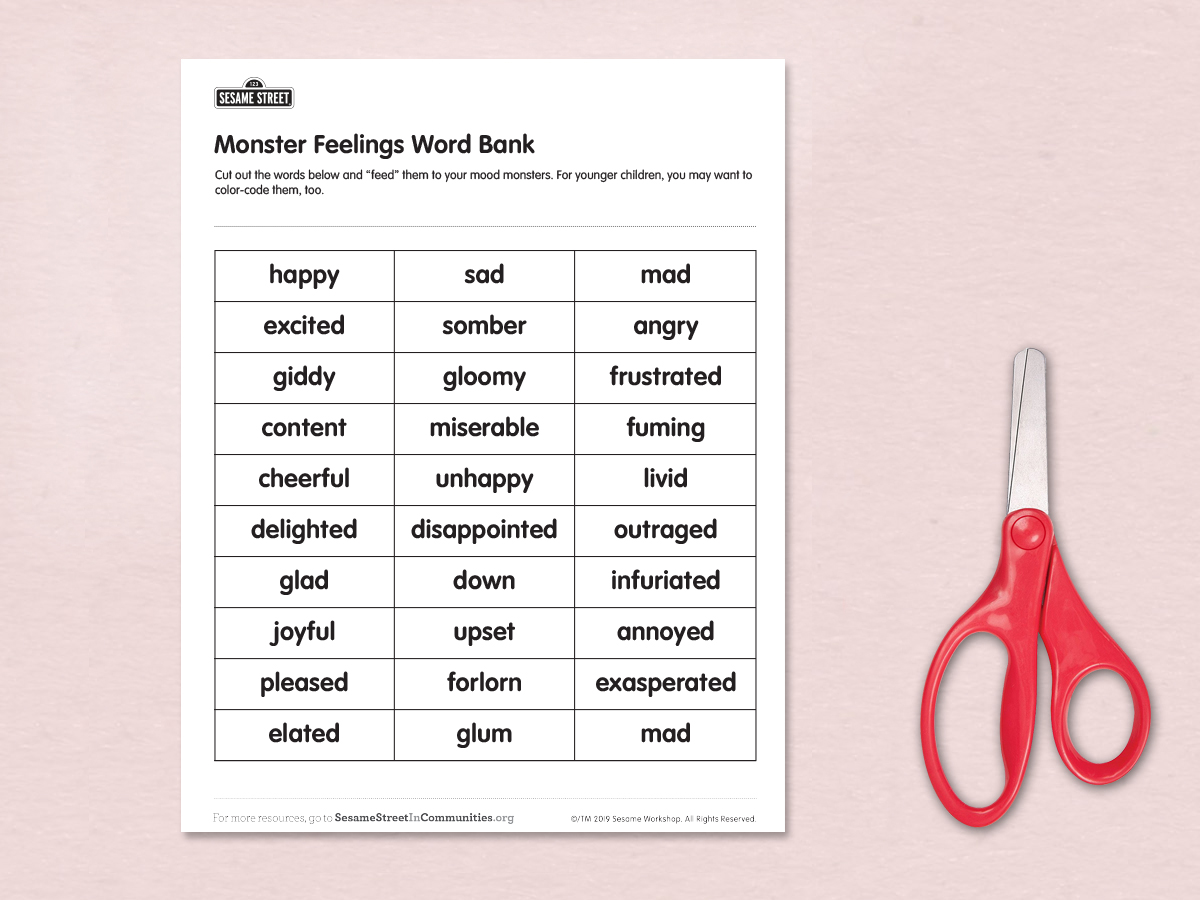
Session 4: Stormy Feelings
Explore big feelings and coping strategies.
Caregiving can bring up difficult feelings in both adults and children.
As a provider, you can guide families through healthy ways to express and manage these feelings.
This workshop:
- Explores feelings that caregivers commonly experience.
- Provides strategies for adults and children to cope with these feelings.
Looking for the rest of the sessions? Visit the Supporting Caregiving Families page.
NOTE: As with other workshops in this series, most activities can benefit both kids and adults, one-on-one or in groups. Depending on who you’re working with, change or leave out activities as you see fit. You know your kids and families best!
1. Grown-Up Feelings
Grown-Up Feelings
Caregiving can bring up lots of emotions. Caregivers may experience grief and loss as they mourn the way things used to be. They may feel anxious thinking about their uncertain future. Other feelings, like guilt, nervousness, frustration, anger, and sadness, are also common, and can affect parenting. You can help parents face their emotions with honesty and use tools to reframe their thoughts. When parents manage their feelings in positive ways, they become amazing models for their children.
Let caregivers know:
- Ignoring strong emotions can affect the way you parent.
- Seeing you manage your emotions in a healthy way can help your child manage his own.
- It’s okay to really feel your feelings.
- Feelings are neither good nor bad. They just are.
- You can reframe your thinking to help shift your feelings.
- It’s okay and good to ask for help.
You are in a unique position to provide a safe space for caregivers to work through their emotions.
First, invite caregivers to sit quietly. You might lead them in a guided breathing activity or invite them to color. Next, distribute the Common Caregiver Feelings printable, and talk together about which feelings they relate to. What are some other feelings they have experienced?
You might ask:
- By a show of hands, who can relate to something you’ve just read?
- What stood out to you?
- What can get in the way of facing feelings like these?
Then, on the Thought Record printable, give caregivers some time to write down any negative thoughts they have from time to time.
Introduce to caregivers the idea of Cognitive Distortion. Explain that sometimes we fall into negative ways of thinking that are exaggerated or simply untrue. These distorted thoughts can leave us feeling overly bad about ourselves and our situations. But we can help fight Cognitive Distortion by facing the untrue thoughts and replacing them with more helpful language. (https://nickwignall.com/cognitive-restructuring/)
Use the chart below to familiarize families (yes, kids can learn this strategy, too!) with what distorted thinking can look and sound like, and examples for how to reframe it.
Guiding Question:
What’s a more helpful way of approaching this thought/situation?
| Extreme language like always, never, and every time. He never helps me with things around the house. | Softer language like sometimes, occasionally, and every now and then. It seems like he sometimes doesn’t want to help me with things around the house. |
| Gut reactions and intense responses. What did I do now? | Unrushed, thoughtful responses. I wonder what I can help her with. |
| Blame or judgement. She’s doing this to get back at me. | Optimism and willingness to give the benefit of the doubt. Curiosity to see things from other perspectives. She must be having a really hard day. |
| Obvious errors. He can’t do anything right. I have to do everything myself. | Facts. He does a lot of things right and contributes to our family. I just happen to like the way I do this task. |
| Self-talk that’s very negative. I deserve this. | Self-affirmation and kindness to oneself. This situation is really hard, and it’s okay that I’m feeling low. I am more than this situation. |
Finally, ask caregivers to review the negative thoughts they wrote down. Do they notice any examples of Distortive Thinking? Gently challenge them to choose one negative phrase they wrote down and reframe it. Keep in mind the guiding question: What’s a more helpful way of approaching this thought or situation?
Remind participants that we are all prone to some negative thoughts. It’s totally normal and understandable! Reframing thoughts takes practice. But, over time, it can help us manage our emotions, connect meaningfully with others, and simply be happier.
2. Talking About Feelings
Talking About Feelings
In a caregiving family, children can feel big feelings, too. Confusion, fear, disappointment, frustration, and grief are all common. These big feelings can come and go, and can be triggered by seemingly small things.
Let caregivers and kids know:
- It’s okay to have big feelings, even many big feelings at the same time.
- Talking about feelings can help.
- Parents are always there to listen to children’s feelings.
Watch the Stormy Days video with families, followed by a discussion.
You might ask:
- How can you relate to Rosita?
- What things in your life give you stormy feelings?
- What and who helped Rosita?
- What was her plan to overcome her big feelings?
3. Naming Feelings
Naming Feelings
Young children experience big feelings, but may not know how to talk about them. We can help kids communicate by teaching them to name their feelings.
Introduce the Feelings Have Words interactive to families. Show the game on a large screen, and play it together, clicking on faces and exploring new words.
Then show families how to extend the learning from the screen to real life, using these playful ideas:
- When you click on a face, ask children to make the same face.
- Ask, “In your life, when do you make a face like that?”
- Ask, “What else could we call this feeling?”
- Families might create their own Feeling Faces Game using family pictures.
- Point to feeling faces in books, magazines, or in real life.
- Talk about feelings using lots of ways to describe them. “I’m feeling exasperated, or very, very frustrated.”
Help families build their feelings vocabulary using this activity:
Monster Feelings Sorter Activity
Each family will need:
- 3 Paper cups
- 3 Cocktail-sized paper plates
- Craft materials, such as paper, and markers
- Scissors
- Tape and/or glue
- Slips of paper and/or the feelings word bank printable
Directions:
- On the three paper plates, create mood monster faces for: Happy, Sad, and Mad.
- Be sure to cut a hole or slit for the mouths.
- Attach the finished plates to the openings of each cup, creating a bucket.
- Together, think of several feelings words, such as calm, afraid, stressed, and proud. Write one feeling word on each strip of paper. Use the provided word bank printable for even more feelings words.
- Now sort through the feelings vocabulary words, and “feed” them to the mood monster they belong to. (Note: for younger children, you may want to color-code the words.)
Encourage families to take their mood monsters home and “feed” them often!



